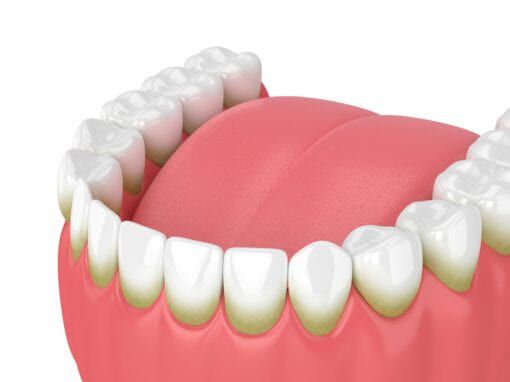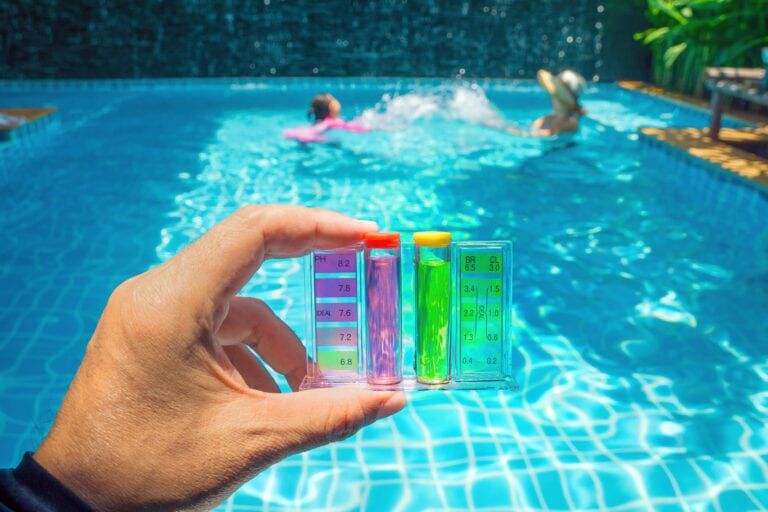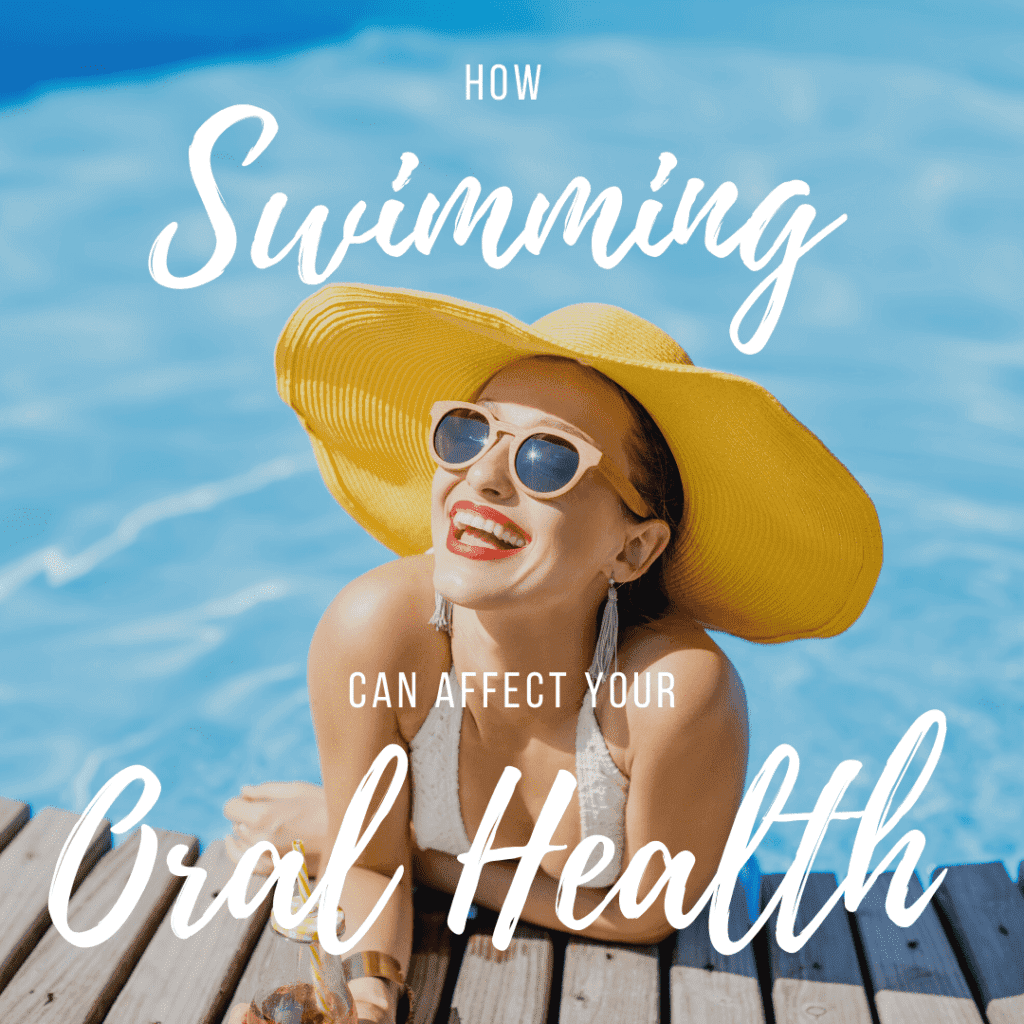Memorial Day weekend has long been regarded as the unofficial start of summer. With the arrival of summer comes more time spent in the sun, at the beach, and in the swimming pool. Although swimming is a beneficial form of exercise that also helps to cool you down, it can potentially threaten your oral health. Many people are unaware of this, therefore here are some things you should know about swimming and your oral health:
Chlorine can damage tooth enamel

One of the first things you should know is that chlorine can damage tooth enamel. Chlorine is an essential additive to drinking water and swimming pools used to kill harmful bacteria in order to prevent waterborne diseases. In drinking water, the concentration of chlorine is so low that it has no effect on your teeth. However, in swimming pools the concentration of chlorine is much higher, making the water slightly acidic. Chlorine can also accumulate on the surface of your teeth, causing something known as swimmer’s calculus. Swimmer’s calculus can make your teeth appear more yellow than usual and can increase the risk of enamel erosion.
Chlorine can cause tooth sensitivity
Since chlorine can erode the enamel, it can also lead to tooth sensitivity. This is because the enamel is the outermost protective layer of the tooth. When the enamel deteriorates, it allows stimuli to enter the inside of the tooth and irritate the nerve. This produces a painful sensation known as tooth sensitivity.
The risk of oral injuries increases
Ultimately, swimming is a sport and the risk for oral injuries always increases while engaging in any type of sports activities. This is especially true when participating in water sports like water polo. Children are also prone to oral injuries, especially if they play rough. Although injuries can also occur while swimming recreationally, the risk is lower. Nevertheless, it is important to practice proper poolside safety to minimize the risk of falls and oral injuries.
Dental appliances can become lost or damaged
Believe it or not, one of the main reasons dental appliances get lost or damaged is from swimming. This is because if they fall out of the mouth the water makes it almost impossible to locate them. This means that they will either not be found or they will be found by being stepped on. Therefore, it is recommended to store all removable appliances in their protective plastic cases in a safe location away from the pool.
Barodontalgia
Although this condition does not happen in swimming pools, it can affect people who scuba dive. This condition occurs when there are changes in the ambient pressure that causes the air inside the tooth to expand or contract. While air is not normally inside the tooth, air pockets can form when there is untreated decay, a faulty restoration, or an unknown tooth fracture. In some cases, this condition can also lead to a faulty restoration or tooth fracture when pressure inside the tooth builds.
Swimming safety tips for your oral health
Tip #1: Check your chlorine levels

One of the best ways to protect your teeth and prevent threats to your oral health is to carefully manage the amount of chlorine in your pool. According to the Centers for Disease Control and Prevention, your pool’s pH should fall between 7.2-7.8 and should have free chlorine concentration of at least 1 part per million. In hot tubs, this can be at 3 parts per million. Using too much chlorine will continue to increase the acidity of the water, which will further deteriorate your enamel, as well as causing other health issues. If you are unsure on how to properly manage chlorine levels, then it is recommended to hire a professional to maintain your pool.
When on vacation or swimming in a pool that you do not own, it is also recommended to observe the pool linings, ladders, and railings. Examining these locations will allow you to estimate the amount of chlorine used. In cases where the surfaces look excessively eroded, you can then deduce that the amount of chlorine in the pool is likely high. In these instances, it is recommended that you either limit your time in said pool or to find an alternative swimming location.
Tip #2: Practice poolside safety
To reduce the risk of oral injuries, it is always recommended to practice poolside safety. One important safety rule that should always be followed is to not run around the pool surface, since the ground is often wet and very slippery. Additionally, you should always wear a protective sports mouth guard when participating in water sports such as water polo or water volleyball. Finally, to protect your dental appliances from becoming lost, damaged, or from injuring someone else, you should remove any removable appliances and store them safely in their protective plastic cases away from the pool.
Tip #3: Stay up to date on dental care
A final swimming safety tip is to stay caught up on your dental care. Regular dental exams allow your dentist to carefully monitor your oral health. Regular teeth cleanings also allow your dentist to remove excess plaque and tartar, as well as swimmer’s calculus. In order to minimize the risk of enamel erosion and the accumulation of excess chlorine, both regular dental exams and dental cleanings are recommended. Additionally, dental exams are also beneficial to prevent barodontalgia from occurring while scuba diving. Having your dentist check your teeth for decay, and your dental restorations for signs of damage, will decrease the likelihood of you experiencing this horrible pain.




